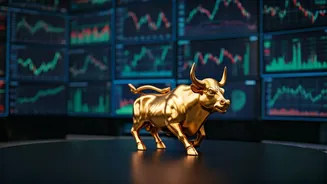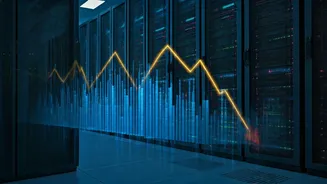Investment Flow Dynamics
Recent data indicates a noticeable shift in investment trends within the Indian market. Inflows into mid-cap and small-cap funds have experienced a decline
of up to 25 percent. This drop suggests a potential change in investor risk appetite or a re-evaluation of growth prospects within these market segments. The reduced investment in these areas could be influenced by various factors, including market volatility, sectoral performance, and overall economic outlook. Investors might be seeking relatively safer avenues, or the perceived growth potential in mid-cap and small-cap stocks might be waning, leading to this shift. Further analysis is needed to determine the specific drivers behind this change, but it's clear that it represents a significant development in the market's internal mechanics.
Gold ETF Surge
Simultaneously, there has been a significant surge in the assets under management (AUM) of gold exchange-traded funds (ETFs). The total AUM for gold ETFs has surged past Rs 1 lakh crore. This substantial increase highlights the growing appeal of gold as an investment asset, possibly due to its perceived role as a safe haven during uncertain economic times. The rise in gold ETF investment underscores a tendency towards defensive strategies among investors, who might be hedging against market volatility or seeking to protect their portfolios against inflation. This shift also reflects the changing investment preferences and the importance of gold within the Indian financial market. The growth suggests that gold is not just viewed as a traditional asset but is becoming a more integral part of modern, diversified investment portfolios, attracting both retail and institutional investors.
Market Sentiment Insights
The combination of these two trends – decreased inflows into mid-cap and small-cap funds and increased investment in gold ETFs – reveals interesting insights into prevailing market sentiment. It signifies a potential move towards risk aversion and a preference for more stable or established asset classes. This could also be a result of the overall economic climate, including factors like interest rate movements, inflation expectations, and global economic performance. Investors often rebalance their portfolios in response to these factors, which can explain the current trend. Monitoring these shifts in investment behavior is crucial for understanding the wider economic dynamics at play, including investor confidence levels and expectations for future market performance.
Future Market Outlook
Looking ahead, the direction of these investment trends will greatly impact the market’s trajectory. A sustained shift away from riskier assets could lead to slower growth in certain market segments, whereas the increased interest in gold could provide a cushion against economic uncertainty. The actions of major institutional investors and the overall economic policy environment in India will play an essential role in dictating future investment strategies. Close monitoring of macroeconomic indicators, along with detailed analyses of sectoral performances, will be vital for investors aiming to make informed decisions in this evolving environment. The convergence of these trends suggests a dynamic market that requires diligent analysis and strategic planning to navigate effectively.














